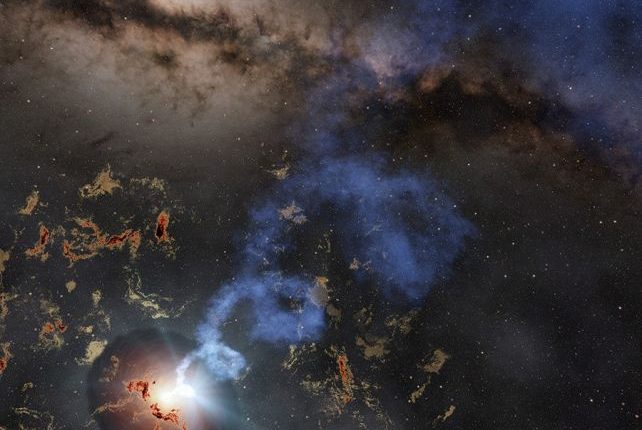ASTRONOMERS have witnessed a strange and rare kind of cosmic explosion for the first time.
The space explosion is known as a luminous fast blue optical transient (LFBOT).
LFBOTs tend to shine brightly in blue light, reaching peak brightness and fading within days.
This is in contrast to supernovas, which can take weeks or even months to dim.
This specific LFBOT, dubbed Tasmanian Devil, occurred in a nearby galaxy located around 1 billion light-years from Earth.
While it was first observed in 2022, it has recently been caught repeatedly flaring with the “strength of 100 billion Suns,” per Science Alert.
“An event like this has never been witnessed before,” said study co-author astrophysicist Jeff Cooke from Swinburne University of Technology and the ARC Centre of Excellence in Gravitational Wave Discovery (OzGrav) in Australia.
Only a handful of previous LFBOTs have been discovered since 2018, according to Nasa.
And all of the discovered explosions have happened inside galaxies where stars are being born.
Still, astronomers are not sure of the underlying process behind these rare occurrences.
Most read in News Tech
And the Tasmanian Devil, the first LFBOT to be observed flaring repeatedly, is only causing more questions for scientists.
“[LFBOTs] emit more energy than an entire galaxy of hundreds of billions of stars like the Sun,” said Cooke.
“The mechanism behind this massive amount of energy is currently unknown,” he added.
“Amazingly, instead of fading steadily as one would expect, the source briefly brightened again — and again, and again,” said lead study author Anna Y.Q. Ho, assistant professor of astronomy in Cornell University’s College of Arts and Sciences, in a statement.
“LFBOTs are already a kind of weird, exotic event, so this was even weirder.”
The findings about the latest Tasmanian Devil LFBOT discovery were published Wednesday in the journal Nature.
Researchers were able to uncover the flaring using 15 telescopes around the globe.
When asked about the findings, Ho said: “No one really knew what to say.
“We had never seen anything like that before — something so fast, and the brightness as strong as the original explosion months later — in any supernova or FBOT (fast blue optical transient).
“We’d never seen that, period, in astronomy.”










